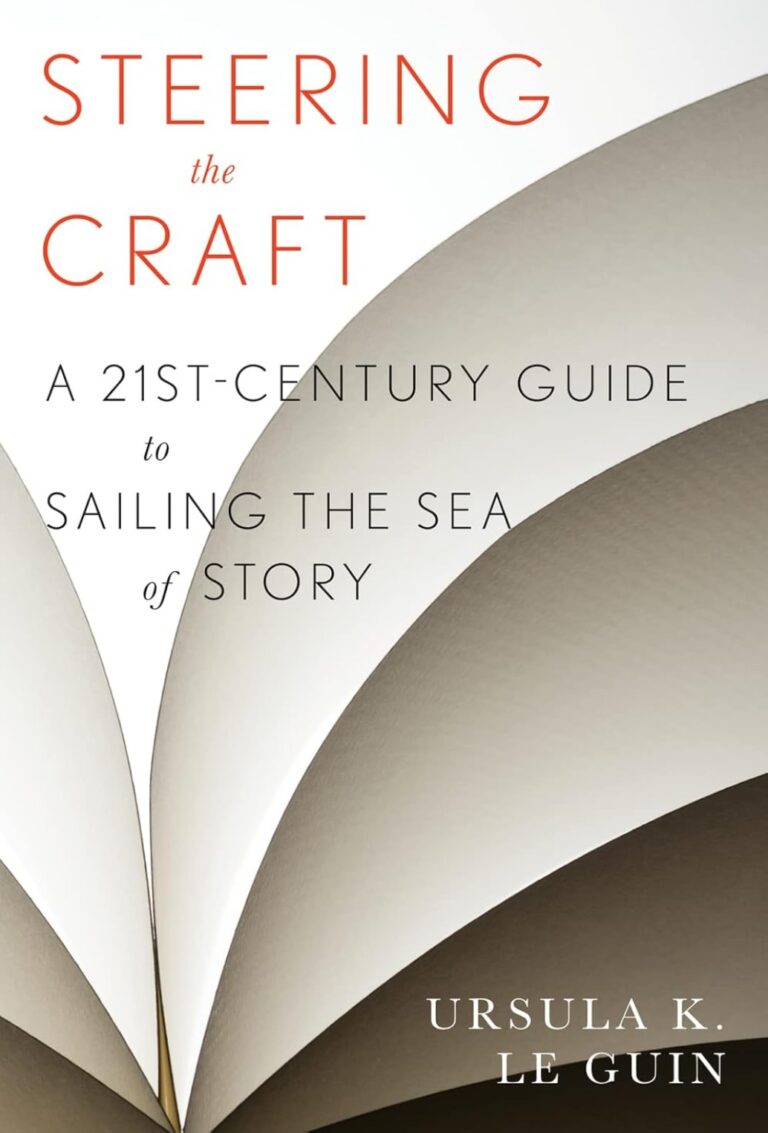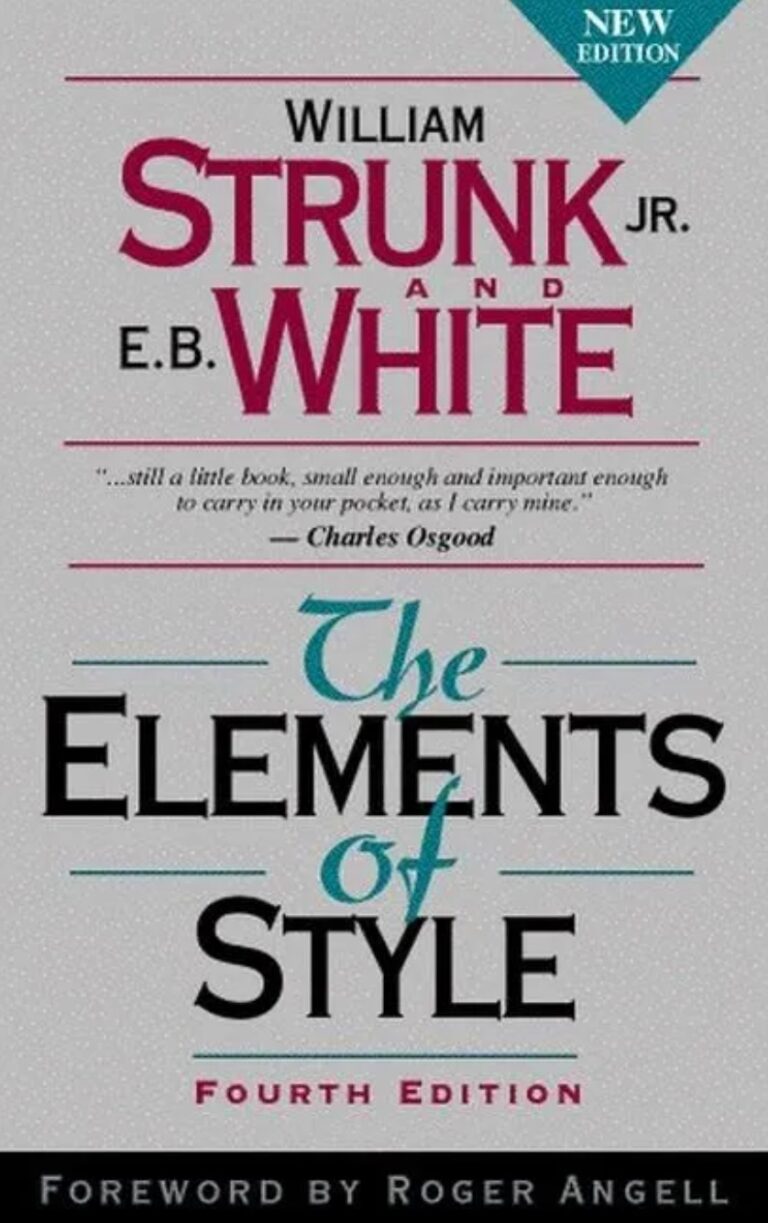The Emotion Thesaurus: A Writer’s Guide to Character Expression by Angela Ackerman and Becca Puglisi is an essential tool for writers looking to bring more emotional depth to their characters. With detailed lists of physical signals, internal sensations, and mental responses for over 130 emotions, this book helps writers show emotions rather than tell.
Whether you’re drafting or revising, The Emotion Thesaurus provides inspiration and guidance for crafting more authentic and nuanced character emotions.
Table of Contents
ToggleIntroduction
Overview of the Book
The Emotion Thesaurus by Angela Ackerman and Becca Puglisi is an essential tool for writers who want to create more nuanced, believable characters by mastering the art of emotional expression.
First published in 2012, and now expanded in a second edition, this thesaurus serves as a comprehensive reference guide to help writers show emotions through their characters’ physical actions, internal sensations, and mental responses, rather than relying on telling emotions directly.
The book offers detailed lists of physical signals, internal sensations, mental responses, and long-term impacts for 130 different emotions, making it a valuable resource for writers across genres.
Whether you’re trying to show a character’s nervousness through subtle body language or express their anger in a way that feels fresh and realistic, The Emotion Thesaurus provides inspiration and guidance to take your writing to the next level.
Why This Book is Important for Writers
One of the cardinal rules of good writing is “show, don’t tell,” but it can be challenging to find new and effective ways to show how characters are feeling. The Emotion Thesaurus helps writers move beyond clichéd expressions and dig deeper into the subtleties of human emotion.
It’s particularly valuable for those who want to enrich their character development, making their fictional worlds feel more immersive and emotionally engaging. By offering a wide range of emotional cues, the book allows writers to create more layered, believable characters who react to situations in ways that feel authentic and nuanced.
Author Background
About the Authors
Angela Ackerman and Becca Puglisi are co-founders of the popular writing resource site Writers Helping Writers, and they are known for their series of thesaurus books that offer writers specialized tools to improve their craft.
Both authors have extensive backgrounds in writing and storytelling, and they use their combined expertise to help other writers enhance their skills through practical, hands-on resources.
Their first collaboration, The Emotion Thesaurus, has become a must-have reference for writers, and it has been followed by other related guides, such as The Positive Trait Thesaurus and The Negative Trait Thesaurus.
Ackerman and Puglisi’s experience as writers and educators has made them trusted voices in the writing community, and their work focuses on helping writers understand the mechanics of storytelling in a clear and accessible way.
Relevance of the Authors’ Experience to the Book
Ackerman and Puglisi’s expertise shines through in The Emotion Thesaurus, which is built on their deep understanding of character development and emotional dynamics in storytelling. Their experience as both writers and educators makes the book an incredibly practical tool for writers at all stages of their careers.
They combine an analytical approach to emotions with creative insights into how these emotions can be effectively portrayed through writing. Their work is particularly helpful for writers looking to elevate their craft by creating more vivid and emotionally resonant characters.
Book Structure and Style
Layout and Chapter Overview
The Emotion Thesaurus is organized into sections based on individual emotions, with each emotion getting its own entry. Each entry includes a list of physical signals, internal sensations, mental responses, and long-term effects that characters might exhibit when feeling that emotion.
For example, the entry for “anger” includes a variety of physical cues such as clenched fists, a red face, or a tightened jaw, as well as internal responses like a racing heart or flushed skin.
The book’s structure makes it easy for writers to quickly find the information they need. Writers can look up an emotion and instantly have access to a range of cues that can help them show that emotion in their characters.
Each entry also includes a section on potential long-term effects of the emotion, helping writers understand how repeated emotional states might influence a character over time.
Writing Style and Tone
Ackerman and Puglisi’s writing style is clear, straightforward, and practical. The book is written as a reference guide, and it stays focused on delivering helpful information without unnecessary fluff.
The tone is encouraging, with the authors frequently reminding readers that their goal is to offer inspiration and tools rather than strict rules. The book’s simplicity and organization make it a highly usable resource, and its tone strikes the perfect balance between informative and supportive.
Key Takeaways for Aspiring Writers
Practical Advice and Techniques
One of the most practical aspects of The Emotion Thesaurus is its focus on showing emotion through physical actions and internal sensations, which helps writers avoid the trap of “telling” emotions in a flat, obvious way.
Instead of writing “he was nervous,” writers can refer to the thesaurus and find physical cues such as “fidgeting with clothes” or “biting nails” to more vividly express the emotion of nervousness. This method of showing emotions enhances the reader’s experience and makes characters feel more realistic.
The book also encourages writers to think beyond the obvious. For example, instead of relying on typical gestures for emotions like sadness or anger, The Emotion Thesaurus suggests more subtle alternatives, pushing writers to be more creative in how they show their characters’ feelings. This broadens a writer’s repertoire of emotional cues, helping them craft more dynamic and complex characters.
The inclusion of long-term effects of emotions is another practical tool. By considering how emotions impact characters over time, writers can create more consistent and believable character arcs, allowing for emotional growth or deterioration throughout a story.
Theoretical Insights and Perspectives
Though primarily a reference book, The Emotion Thesaurus also offers insights into the nature of emotion in storytelling. The authors emphasize that emotions are not isolated moments; they ripple outward, influencing characters’ decisions, relationships, and the overall narrative.
By grounding their approach in the psychology of emotions, Ackerman and Puglisi help writers understand that characters are driven by a complex mix of internal and external factors, and that emotions should reflect that complexity.
Additionally, the book touches on how body language and internal sensations work in tandem with dialogue to create a fuller emotional picture. This highlights the idea that well-rounded emotional expression is not just about what a character says, but also about how they move, react, and feel in response to their surroundings. This encourages writers to develop a multi-dimensional approach to emotional storytelling.
Strengths of the Book
Unique Features and Approaches
The most unique feature of The Emotion Thesaurus is its comprehensive approach to emotional expression. By offering detailed lists of physical and internal responses for each emotion, the book provides writers with a treasure trove of ideas for conveying emotions without falling back on clichés or overused descriptions.
This sets the book apart from other writing guides that may offer only general advice on character development without diving into the specific nuances of emotional expression.
Another strength is the book’s practical, user-friendly layout. Writers can easily flip to the emotion they want to explore and instantly access a variety of ways to depict that emotion.
The layout is designed for quick reference, making it an indispensable tool during the writing process, especially during revision when writers are fine-tuning the emotional layers of their scenes.
Applicable to Different Levels of Writers
The Emotion Thesaurus is accessible to writers at all stages, from beginners to seasoned professionals. For new writers, the book offers a structured approach to understanding and depicting emotions, which can help them build stronger, more realistic characters.
The clear and practical nature of the book makes it easy to use, even for those just starting out in their writing journey.For more experienced writers, the book serves as a valuable resource for refining character development.
Even seasoned authors can fall into the trap of overusing certain emotional cues, and The Emotion Thesaurus provides fresh ideas for depicting familiar emotions in new ways. The variety of expressions listed for each emotion can inspire experienced writers to explore new layers of their characters’ emotional lives.
Areas for Improvement
Potential Weaknesses or Gaps
While The Emotion Thesaurus is a highly useful tool, its focus is primarily on individual emotions rather than on the broader context in which these emotions occur. Writers looking for guidance on how to develop emotional arcs or explore the interplay between different emotions over the course of a scene or a story may need to supplement this book with other resources.
The book does not delve deeply into how emotions build or evolve in more complex emotional situations, such as moments where a character experiences conflicting emotions.Additionally, because the book is structured as a reference guide, it lacks a narrative flow that might appeal to readers looking for a more in-depth exploration of character development.
While this makes the book highly practical, it might not appeal to those who prefer writing guides that provide more detailed theoretical discussions of emotion and character psychology.
Audience Suitability
The book is well-suited for fiction writers, but it may not be as applicable to other types of writing, such as nonfiction or technical writing. The focus on character development and emotional expression makes it a tool specifically tailored for those working on novels, short stories, or screenplays.
Writers who work primarily in genres that require less focus on character emotion may find the book less relevant to their needs.
How This Book Compares to Other Writing Guides
Similar Books in the Genre
The Emotion Thesaurus is part of a larger trend of specialized writing guides that focus on specific elements of storytelling, such as character development, world-building, or plot.
Other books in the thesaurus series, such as The Positive Trait Thesaurus and The Negative Trait Thesaurus, offer similarly detailed approaches to other aspects of character development. However, The Emotion Thesaurus stands out for its singular focus on emotions and the depth with which it explores the physical and internal aspects of emotional expression.
When compared to more general writing guides like The Writer’s Journey by Christopher Vogler or Story by Robert McKee, The Emotion Thesaurus offers a more focused, practical resource.
Vogler’s and McKee’s books are comprehensive in scope, covering a wide range of storytelling elements, including structure, theme, and character arcs. In contrast, The Emotion Thesaurus zooms in on one particular area—emotional expression—offering a much more detailed approach to a specific aspect of writing.
Writers looking to enhance their character emotions will find The Emotion Thesaurus to be an excellent complement to these broader guides.
Distinguishing Factors
What truly distinguishes The Emotion Thesaurus is its practical, hands-on approach to emotional expression. Many writing guides discuss the importance of “show, don’t tell,” but few provide the specific, actionable tools that The Emotion Thesaurus offers.
The book’s format as a quick-reference guide makes it incredibly user-friendly, and its focus on body language, internal sensations, and mental responses allows writers to show emotions in a more nuanced and authentic way.
Additionally, Ackerman and Puglisi have created a book that evolves with the needs of the writer. Whether you’re writing a first draft and need inspiration for how to show a character’s anxiety or you’re revising a scene and want to deepen your protagonist’s emotional responses, The Emotion Thesaurus can be used at any stage of the writing process.
Real-World Application for Writers
How Writers Can Implement the Advice
Writers can immediately start using The Emotion Thesaurus by referencing it during key emotional scenes in their stories. If a scene calls for a character to express fear, instead of writing “she was scared,” writers can look up “fear” in the thesaurus and choose from a variety of physical actions (e.g., darting eyes, shrinking away) or internal sensations (e.g., a tightening in the stomach, shallow breathing) that can convey the emotion more vividly.
The book can also be used during revisions. If a writer feels that a character’s emotional response in a scene feels flat or predictable, they can consult The Emotion Thesaurus to find fresh ways to depict the character’s feelings. This can help enrich the narrative and make characters more relatable and human.
Moreover, the thesaurus entries encourage writers to think about the long-term effects of emotions. If a character frequently experiences frustration, for example, the book suggests that this might manifest in a character’s habitual irritability or quick temper. This allows writers to build more realistic emotional arcs that reflect the cumulative impact of their characters’ experiences over time.
Benefits of Following the Book’s Advice
By incorporating the techniques outlined in The Emotion Thesaurus, writers will create characters that feel more authentic and emotionally engaging. Readers are more likely to connect with characters whose emotions are expressed in ways that feel natural and believable.
The book also helps writers avoid overused or clichéd expressions of emotion, encouraging them to think more deeply about how their characters might react in various situations.
Another key benefit is the ease with which writers can apply the book’s advice. The format is designed for quick reference, allowing writers to dip in and out of the book as needed without interrupting their workflow.
Whether writing or revising, the ability to instantly access emotional cues makes The Emotion Thesaurus an invaluable tool for improving the emotional depth of a story.
What Reviews Thought
Amazon Reviews
On Amazon, The Emotion Thesaurus has garnered widespread praise for its practicality and usefulness. Reviewers consistently mention how the book helps them avoid clichés and infuse their writing with more authentic emotional depth. Many reviewers appreciate the detailed lists of emotional cues, noting that the book gives them new ideas for showing character emotions in a more subtle and engaging way.
A few reviewers mention that while the book is a fantastic resource for writers, it’s best used as a reference guide rather than a cover-to-cover read. The book’s straightforward, list-based format is designed to be consulted as needed, and some readers point out that its true value lies in how easily it can be incorporated into the writing process.
Overall, the response from Amazon reviewers is overwhelmingly positive, with many calling The Emotion Thesaurus a must-have for any writer’s toolkit.
Goodreads Reviewers
On Goodreads, the reviews are similarly enthusiastic. Many readers commend the book for being a practical, easy-to-use tool that helps them improve their character development.
Reviewers highlight how the thesaurus has helped them enhance the emotional impact of their scenes, with several mentioning that the book has become a go-to resource during revisions.
A few Goodreads reviewers note that while the book is helpful, it may not provide the level of depth that some writers are seeking, particularly when it comes to exploring more complex emotional states or interactions between characters.
However, the majority of reviews express gratitude for the clarity and usefulness of the thesaurus, with many readers appreciating its straightforward approach to one of the most challenging aspects of writing—showing emotion.
Conclusion
Summary of Key Insights
The Emotion Thesaurus by Angela Ackerman and Becca Puglisi is an invaluable resource for writers looking to enhance their character’s emotional expression. With its detailed lists of physical actions, internal sensations, and mental responses, the book provides practical, hands-on tools for showing emotions in a more nuanced and engaging way.
The book’s quick-reference format makes it easy to use at any stage of the writing process, from drafting to revision, and its focus on emotional authenticity helps writers create more realistic, relatable characters.
Final Recommendation
For writers who struggle with “showing” emotions or who feel their character’s emotional responses could be more dynamic, The Emotion Thesaurus is an essential addition to their writing toolkit.
The book’s practical, user-friendly format makes it accessible to writers at all levels, and its wealth of emotional cues offers endless inspiration for enriching character development.
Whether you’re a beginner working on your first novel or an experienced author refining your prose, The Emotion Thesaurus will help you craft more emotionally resonant stories that connect with readers on a deeper level.











